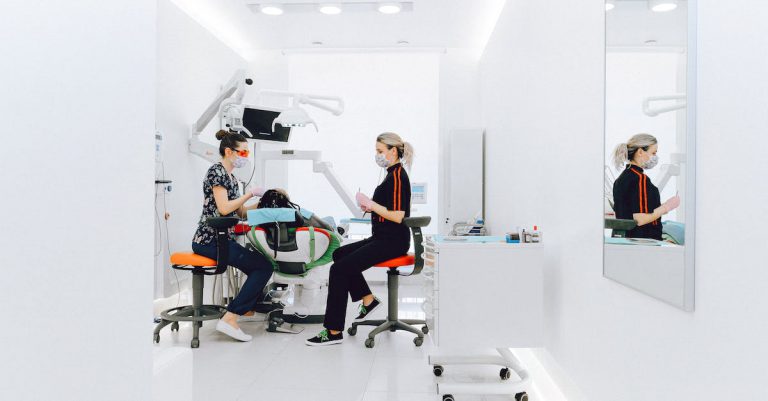Are you considering a career as a Physician Assistant (PA)?
One of the most important factors to consider when pursuing this career path is the cost of education.
If you’re short on time, here’s a quick answer to your question: The cost of PA school can range from $30,000 to $120,000.
In this article, we will explore the various factors that contribute to the cost of PA school, including tuition, fees, and living expenses. We will also discuss ways to finance your education and minimize your debt.
By the end of this article, you will have a better understanding of the financial commitment required to become a PA and how to prepare for it.
Tuition and Fees
One of the most important factors to consider when applying to Physician Assistant (PA) school is the cost of tuition and fees. PA programs can be expensive, but the cost can vary depending on several factors.
Public vs. Private Programs
The first factor to consider is whether the PA program is offered by a public or private institution. Public programs are typically less expensive than private programs. According to the Physician Assistant Education Association (PAEA), the average cost of tuition and fees for a public PA program is around $40,000 for in-state residents and $80,000 for out-of-state residents. Private PA programs, on the other hand, can cost upwards of $100,000.
In-State vs. Out-of-State Tuition
Another important factor to consider is whether you are a resident of the state where the PA program is located. In-state tuition is usually much lower than out-of-state tuition. For example, the University of Iowa’s PA program charges in-state students $36,000 for tuition and fees, while out-of-state students are charged $75,000. Similarly, the University of Utah’s PA program charges in-state students $43,000, while out-of-state students are charged $77,000.
Program Length and Curriculum
The length of the PA program and its curriculum can also affect the cost of tuition and fees. Most PA programs last around 27 months, but some can be as short as 24 months or as long as 36 months. Longer programs will generally be more expensive than shorter programs.
Additionally, some PA programs may require additional fees for things like books, equipment, and clinical rotations. It’s important to research each program thoroughly and factor in all potential costs before making a decision.
| PA Program | Tuition and Fees (In-State) | Tuition and Fees (Out-of-State) |
|---|---|---|
| University of Iowa | $36,000 | $75,000 |
| University of Utah | $43,000 | $77,000 |
| Yale University | $87,000 | $87,000 |
It’s important to remember that the cost of tuition and fees is just one factor to consider when choosing a PA program. Other important factors include the program’s accreditation, faculty, clinical opportunities, and location.
Living Expenses
When considering the cost of attending PA school, it’s important to factor in living expenses on top of tuition and fees. Here are some of the most significant living expenses you’ll need to plan for:
Housing
Housing costs can vary widely depending on where you attend PA school. Some programs offer on-campus housing options, while others do not. If you plan to live off-campus, you’ll need to consider the cost of rent, utilities, and other expenses. According to BestColleges.com, the average cost of off-campus housing for PA students is around $1,000 per month.
Food
Food is another significant expense to consider when attending PA school. Depending on your living situation and dietary preferences, your monthly food bill could range from a few hundred dollars to over $1,000. To save money on food, consider meal prepping, cooking at home, and shopping at budget-friendly grocery stores.
Transportation
Transportation costs can also add up quickly, especially if you live off-campus and need to commute to class. According to Niche.com, the average cost of transportation for PA students is around $200 per month. This includes gas, car maintenance, and public transportation expenses.
Financing Your Education
PA school can be expensive, but there are several options available to help finance your education. Here are some ways to pay for your PA program:
Scholarships and Grants
There are various scholarships and grants available to PA students. These can be merit-based or need-based. Some scholarships are specific to certain groups, such as minorities or military veterans. It is important to research and apply for as many scholarships and grants as possible to minimize your out-of-pocket expenses.
One great resource to find scholarships is the Physician Assistant Foundation (PAF). The PAF offers several scholarships to PA students each year. You can also check with your school’s financial aid office and professional organizations such as the American Academy of Physician Assistants (AAPA).
Loans
Student loans are a popular option for financing a PA education. The federal government offers several loan programs, such as the Direct Unsubsidized Loan and Direct PLUS Loan. Private banks and lenders also offer student loans, but these often have higher interest rates.
It is important to borrow only what you need and to understand the repayment terms before accepting any loans. You can use loan repayment calculators to estimate your monthly payments after graduation.
Employer Tuition Reimbursement
If you are already working in healthcare, your employer may offer tuition reimbursement as a benefit. This means that your employer will pay for some or all of your PA school tuition in exchange for a commitment to work for them for a certain period of time after graduation.
Some employers offer this benefit to all employees, while others may require you to work for them for a certain period of time before becoming eligible for tuition reimbursement.
Comparison
| Scholarships and Grants | Loans | Employer Tuition Reimbursement | |
|---|---|---|---|
| Source of funds | External organizations | Government or private lenders | Employer |
| Repayment | None required | Required with interest | May require commitment to work for employer after graduation |
| Availability | Varies; must apply and be selected | Available to all students; approval required | Only available to those employed in healthcare |
No matter which option you choose, it is important to plan ahead and budget for your education. By doing so, you can minimize your debt and focus on your career as a physician assistant.
Minimizing Your Debt
PA school can be expensive, but there are ways to minimize your debt. By adopting a few strategies, you can pay off your loans quicker and reduce the overall cost of your education.
Working Part-Time
One way to minimize your debt is to work part-time while you’re in school. This can help you pay for some of your expenses and reduce the amount of loans you need to take out. Many PA programs offer flexible schedules that allow students to work part-time while completing their coursework.
According to a survey conducted by the American Academy of Physician Assistants, more than 80% of PA students work part-time while in school. This not only helps them financially, but it also provides valuable experience that can be helpful in their future careers.
Choosing a Lower-Cost Program
Another way to minimize your debt is to choose a lower-cost program. While some PA programs can cost over $100,000, others are significantly less expensive. For example, the University of North Dakota offers a PA program that costs less than $50,000 for in-state residents.
When choosing a program, it’s important to consider the cost of tuition, as well as the cost of living in the area. Programs in larger cities may be more expensive due to the higher cost of living. However, they may also offer more opportunities for part-time work and clinical experience.
Strategies for Repaying Loans
If you do end up with significant debt after PA school, there are strategies you can use to repay your loans more quickly. One option is to refinance your loans at a lower interest rate. This can save you thousands of dollars in interest over the life of your loan.
Another option is to sign up for an income-driven repayment plan. These plans allow you to make payments based on your income, which can be helpful if you’re just starting out in your career. Additionally, some employers offer loan repayment assistance programs as a benefit to their employees.
By adopting these strategies, you can minimize your debt and make the most of your PA education. Remember, the cost of your education is an investment in your future, so it’s important to choose a program that fits your budget and career goals.
Conclusion
Becoming a PA is a rewarding and fulfilling career choice, but it does require a significant financial investment.
By researching the various factors that contribute to the cost of PA school and exploring ways to finance your education and minimize debt, you can make an informed decision about whether this career path is right for you.
Remember, the investment you make in your education will pay off in the long run, both financially and personally.
We hope this article has provided you with valuable insights and information to help you on your journey to becoming a PA.






